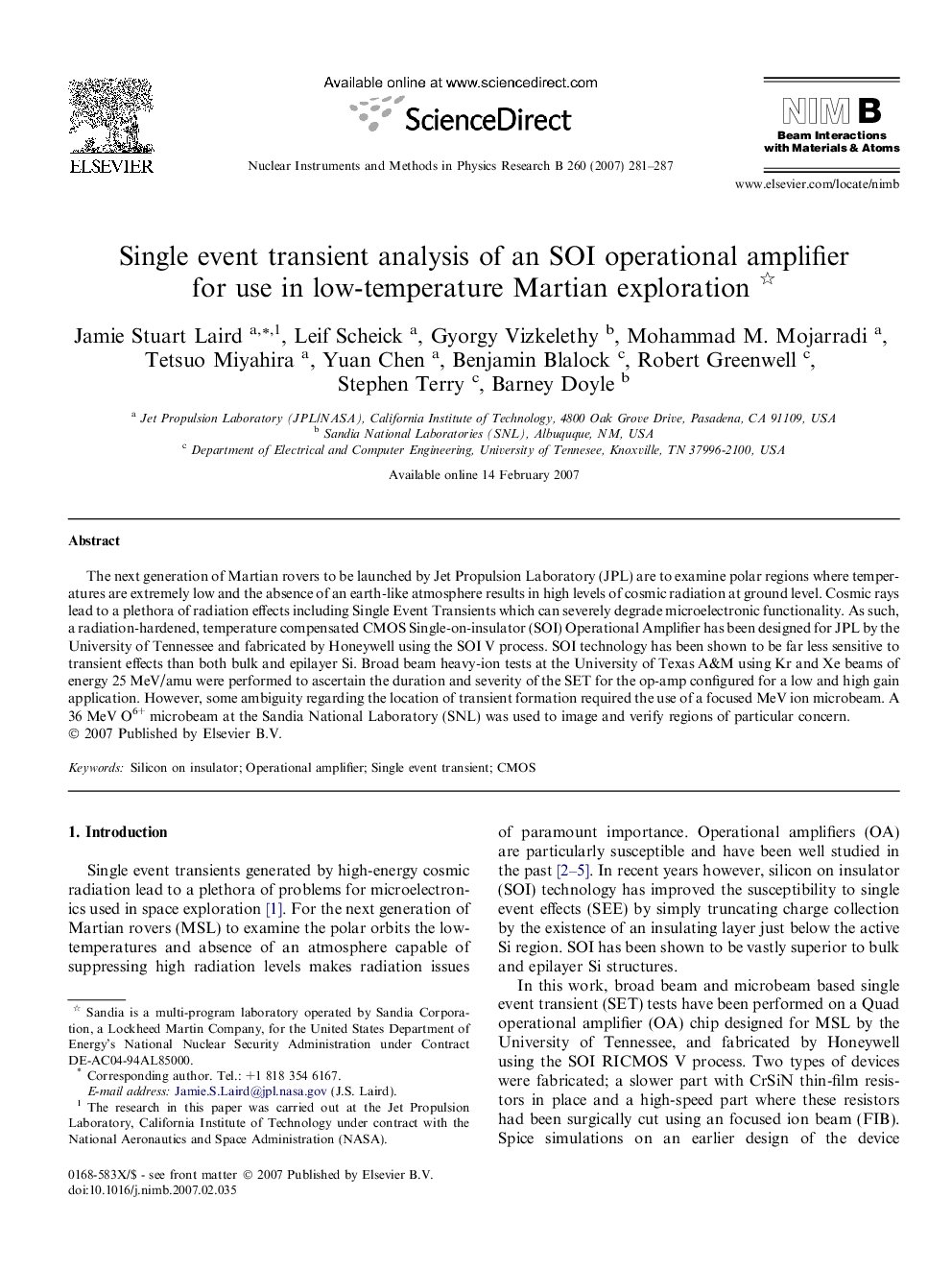| Article ID | Journal | Published Year | Pages | File Type |
|---|---|---|---|---|
| 1687767 | Nuclear Instruments and Methods in Physics Research Section B: Beam Interactions with Materials and Atoms | 2007 | 7 Pages |
Abstract
The next generation of Martian rovers to be launched by Jet Propulsion Laboratory (JPL) are to examine polar regions where temperatures are extremely low and the absence of an earth-like atmosphere results in high levels of cosmic radiation at ground level. Cosmic rays lead to a plethora of radiation effects including Single Event Transients which can severely degrade microelectronic functionality. As such, a radiation-hardened, temperature compensated CMOS Single-on-insulator (SOI) Operational Amplifier has been designed for JPL by the University of Tennessee and fabricated by Honeywell using the SOI V process. SOI technology has been shown to be far less sensitive to transient effects than both bulk and epilayer Si. Broad beam heavy-ion tests at the University of Texas A&M using Kr and Xe beams of energy 25Â MeV/amu were performed to ascertain the duration and severity of the SET for the op-amp configured for a low and high gain application. However, some ambiguity regarding the location of transient formation required the use of a focused MeV ion microbeam. A 36Â MeV O6+ microbeam at the Sandia National Laboratory (SNL) was used to image and verify regions of particular concern.
Related Topics
Physical Sciences and Engineering
Materials Science
Surfaces, Coatings and Films
Authors
Jamie Stuart Laird, Leif Scheick, Gyorgy Vizkelethy, Mohammad M. Mojarradi, Tetsuo Miyahira, Yuan Chen, Benjamin Blalock, Robert Greenwell, Stephen Terry, Barney Doyle,
